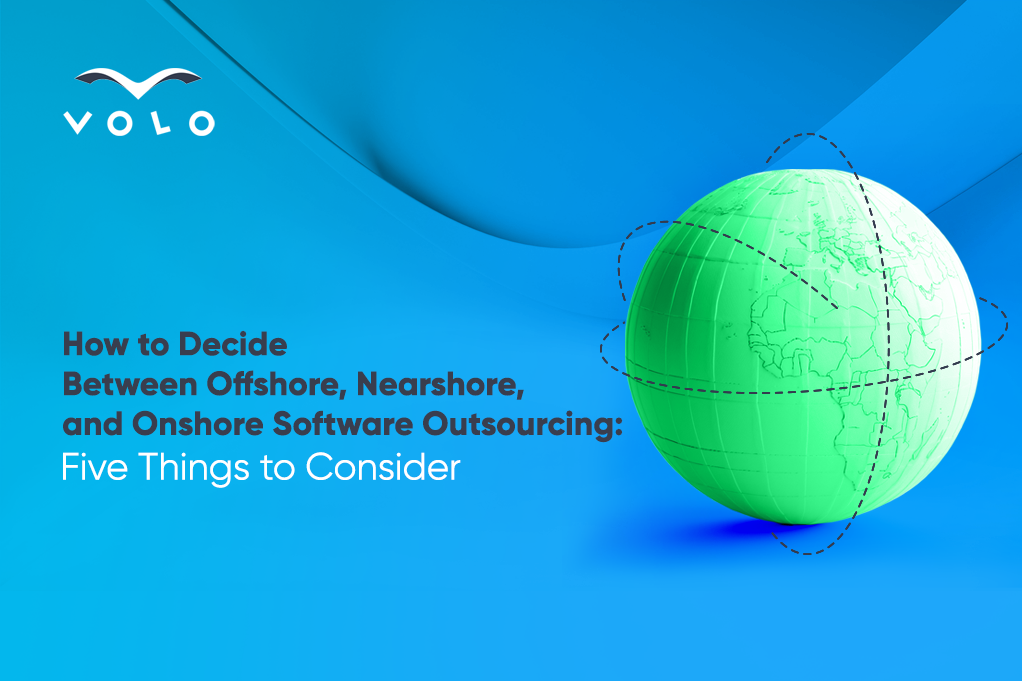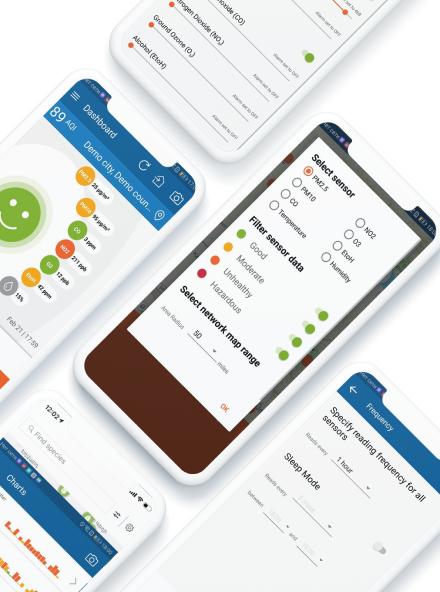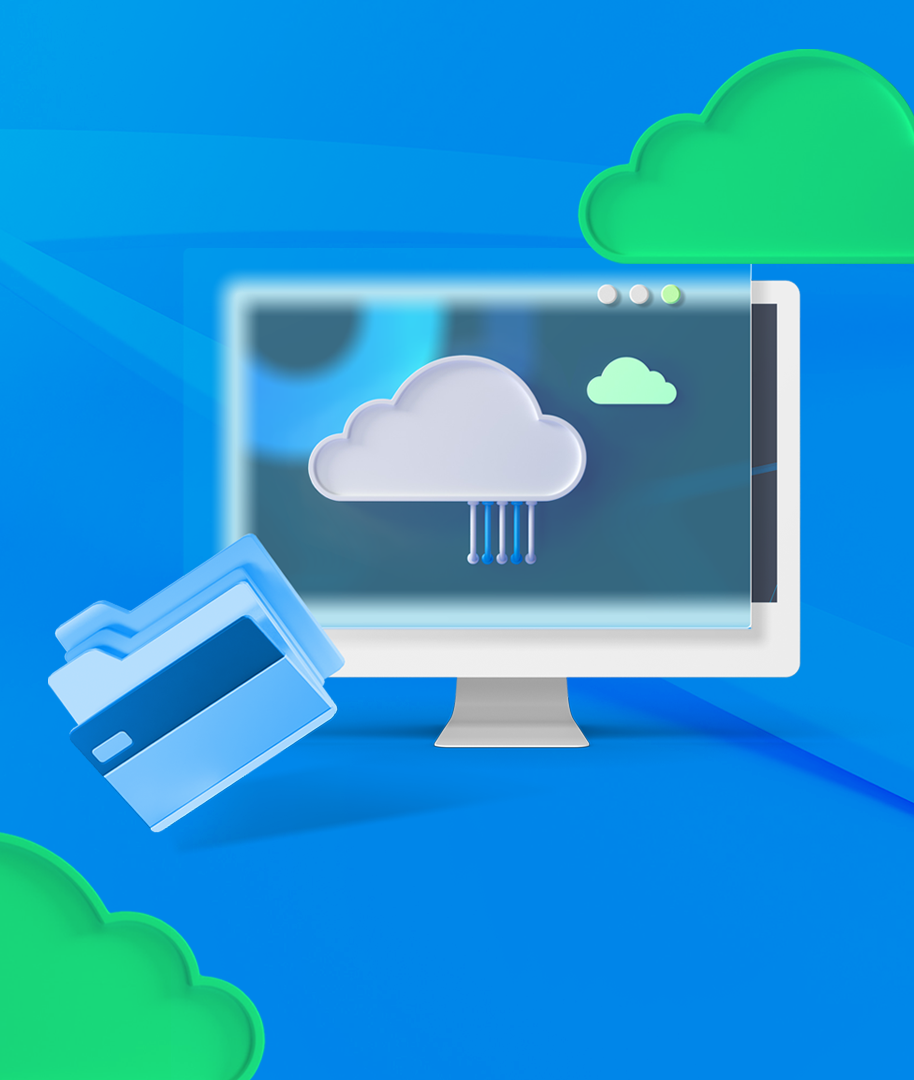
How to Decide Between Offshore, Nearshore, and Onshore Software Outsourcing: Five Things to Consider
24 Nov 2023

Did you know that one of the earliest known cases of software outsourcing dates back to the 1960s and involves the collaboration between NASA and a small company called Bolt, Beranek, and Newman (BBN)? While working on the Apollo program with the purpose to land astronauts on the Moon, NASA outsourced the development of the Apollo Guidance Computer (AGC) software to BBN. The AGC was of crucial importance for the Apollo spacecraft, responsible for navigation and guidance throughout the different phases of the mission. Thus, NASA trusted this complex project to a small technology firm and it was the success of this endeavor that resulted in the acceptance and growth of software development outsourcing in the years to come.
Software outsourcing has evolved and transformed essentially since then, but one thing is for sure - it has stood the test of time. Nowadays, in a job market that is low supply-high demand, companies are looking everywhere to access the type of software talent that is integral in materializing their next-big-thing. Outsourcing software development – through either onshore, nearshore, or offshore outsourcing – remains the best option for finding top talent fast and speeding up product time to market.
Let’s first quickly define these three terms:
- Onshore software development outsourcing entails outsourcing software development to a third party in the same country, i.e. to a locally registered company.
- Nearshore software development outsourcing means outsourcing software development needs to a third party in a country near/adjacent to one’s own. For example, when doing nearshore outsourcing, a US company would partner with a software development firm located in North America or Latin America.
- Offshore software development outsourcing means outsourcing software development needs to a company based in another continent. For example, a US-based company, in this case, can partner with software firms located in Europe or Asia.
Deciding between onshore, nearshore, and offshore outsourcing options for your software development may vary based on what you are looking for in terms of rates, time overlaps, and cultural familiarity. Other things to take into consideration are the amount and level of innovation you are looking for, transparency and sophistication of project management processes, ease of communication, project staff turnover rate, and the availability of world-class software engineers.
So, between offshore, nearshore, and onshore, which is the best option for your company’s programming needs? Before making a decision, consider the following:
1. Level of Innovation
It makes sense that you would get the highest level of innovation from local sources except that the competition is so high that you would have better chances of finding it either nearshore or offshore.
Look for countries that demonstrate a cultural alignment in innovation, where creativity and curiosity are national traits. Such countries are Georgia and Armenia. Both are rapidly developing democracies that have invested heavily in their tech sectors in the past years. Multiple Armenian startups have already made their way in the international market. Armenian software outsourcing firms form enduring and successful partnerships with Western businesses from all sectors - from agriculture and heavy industry to healthcare and finance.
2. Project Management Sophistication
Finding the highest standards of project management will definitely be easier with onshore outsourcing, but the resources will be scarce and expensive.
If you decide to go nearshore or offshore, look for partners who hold international certifications in quality management and the protection of intellectual property, follow qualified processes, and have the depth of experience suited for your type of project. For large-scale world-first projects, go to offshore or nearshore software development companies that have already catered to Fortune 500 companies.
3. Communication
Fluency in English is a must, but it’s not enough. You want to partner with offshore software development teams that have mastered the art of communicating with the client throughout the entire project life cycle. Before the start of the project request attendance in daily/weekly standups, regular emails, and explore the prospect of visiting your development partner in their country.
4. Project Staff Turnover Rate
Another thing to expect from your onshore, offshore or nearshore software engineers is the ability to dive deep into your business issue and share your project vision and goals. The success of your project relies on the types of developers who are more than specialists, but innovation wizards who are always willing to think outside the box and to go that extra mile. These qualities are nurtured in unique company cultures, where teams feel and think both together and for the client. High staff turnover would naturally jeopardize this.
Therefore, in all three options, look for companies that have a record of low turnovers for the industry.
5. Availability of World-Class Software Engineers
High quality software engineers are everywhere – the challenge is to find them before your competitors. When it comes to nearshoring and offshoring, consider destinations that are off-the-beaten track to discover new talent pools. Onshoring in Europe and the United States provides limited opportunities, but there are plenty of software talent mines across the ocean from which to benefit. Eastern Europe is really worth exploring with countries such as Armenia, Bulgaria, and Ukraine (even with the ongoing war) being top talent growing countries.

Nearshore, Offshore, and Onshore Software Outsourcing: Weighing the Benefits and Drawbacks
To help you make the best decision for your business, we have gathered a list of the main benefits and drawbacks of each of these outsourcing models. Let’s dive right in.
The key benefits of onshore software development outsourcing are:
- Cultural affinity and no language barriers. You won’t get lost in translation.
- Full control over your project development.
- Easier and faster communication, no time zone differences, and possibility to have face-to-face meetings.
The drawbacks of onshore software development outsourcing are:
- Smaller talent pool
- Higher costs
The main advantages of nearshore software development outsourcing are:
- No drastic differences in the time zones
- Comparatively lower prices
- Similar regulations and laws
- Partnerships with your neighbors
The main disadvantages of nearshore software development outsourcing are:
- Limited options and limited talent pool
- The prices can still be high, nothing to be compared with the affordability of offshore firms
As for the cultural differences, there can be different cases. For example, a US company outsourcing to a firm located in its southern neighbor country Mexico or another country in Latin America, can experience miscommunication because of the cultural differences, while the differences can be a minimum with a Canadian company.
The pros of offshore software development outsourcing are:
- Access to a global talent pool
- Lower costs and high quality
- Diverse cultural perspectives and ideas, a fresher outlook to how business can be done
- Risk mitigation - when you distribute your development needs across different, distant locations, you potentially reduce the impact of regional challenges on your business
The cons of offshore software development outsourcing are:
- Language differences (though most successful outsourcing firms located in Eastern Europe or Asia are already fluent in English, you need to choose wisely)
- Different time zones
Hybrid Model: An Amalgam of the Three Software Outsourcing Models
If none of the above models meets your expectations, you can also consider hybrid software outsourcing. As the name suggests, this model combines offshore/nearshore software development with onshore or onsite management.
This work model enables you to hire specialists in different countries and add them to your existing team. As a result, you are able to take advantage of the benefits and affordability of offshore/nearshore outsourcing and at the same time, maintain full control for the critical aspects of your project. Depending on the type of your project, the hybrid model can be the right choice for you, helping you achieve optimal efficiency and effectiveness in your software development processes.
How to Make the Final Decision?
At the end of the day, it comes down to the specific goals, needs, and demands of your business as to which of these software development outsourcing models to choose. We have compiled a list of some tips to help you make the right decision.
1. Define What You Need: There are many countries and countless software development companies you can outsource your tech needs to. That’s why one of the first things you should do is define the industry expertise and skills you want your remote team to have. As a rule of thumb, the top outsourcing destinations are Eastern Europe (Ukraine, Armenia), Central Europe (Poland), South America (Argentina), and Asia (India). Consider your budget when choosing the country - Central Europe can be costly, Asia is the cheapest, however, quality is not guaranteed, while in Eastern Europe you can find both quality and affordability.
2. Make a Vendor List: As soon as you choose the country, research the top software vendors there and make a list. Check the industries they work with, explore their company culture, case studies, client testimonials, previous projects, etc. Choose a company that has experience working on a project of your industry.
3. Select the Cooperation Model: Software vendors offer different cooperation models, from fixed price and project-based to dedicated teams and staff augmentation. Evaluate your project scope, budget, deadlines, and requirements, consult the vendor then choose the model that best fits your needs.
4. Communication is Key: Ensure that your vendor is flexible and willing to communicate with you on a platform of your choice. Consider the time zone differences and plan accordingly, schedule weekly/monthly meetings beforehand and let your new partner know your availability during the day in case of urgent questions/issues.
As long as you choose a responsible and experienced software outsourcing partner, the rest will largely depend on careful and smart planning.
Final Words
Do you feel the urge to access and utilize undiscovered software talent? VOLO can help you get some of the best.
Meanwhile, here are some more helpful resources for you to dwell on:
- Outsourcing vs. In-House Development in 2024: A Comprehensive Analysis
- Outsourcing vs. In-House Software Development for Companies in the Commodities Industry
- Our Take on Software Development Outsourcing: An Interview with Armen Kocharyan
- The Team You Should Expect from Your Software Outsourcing Partner
- Exploring Armenia's IT Landscape: A Compelling Case for Outsourcing Software Development
- Your Complete Guide to Software Development Outsourcing
- Navigating Digital Transformation Services: A Guide for Industry Leaders in 2024
- VOLO's Approach to Legacy Transformation



